You may not find this terribly rewarding unless you're included here, so this is a good time for casual and random browsers to turn back before they get too caught up in the sweep and majesty of the proceedings and can't let go.
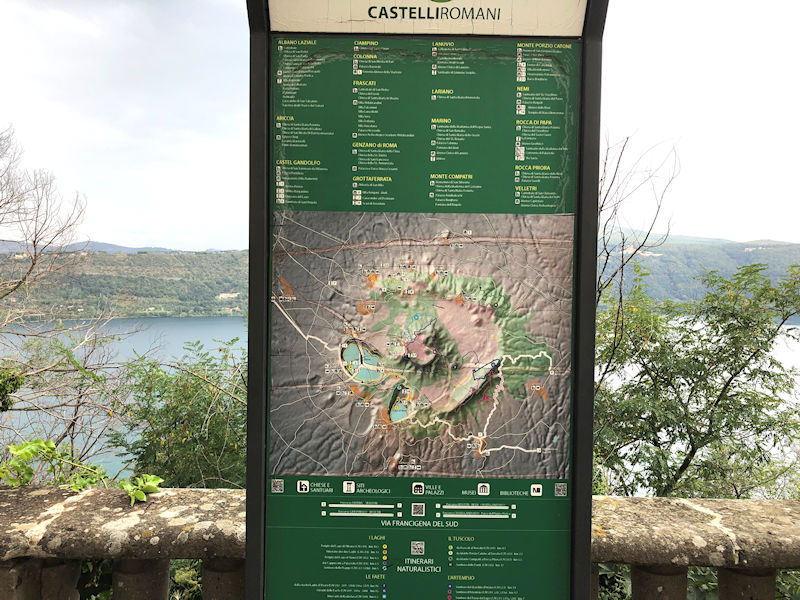
This area of the ancient Colli Albani, or Alban Hills, playground of the Roman elites for millennia, is congregated in the 'Parco Regionale dei Castelli Romani', established in 1984 embracing some 15 comunes within the greater, and oldest, volcanic crater. The Park promotes the usual tourist opportunities and works towards environmentally friendly policies that are said to be resulting in increased flora and fauna populations.

The two lakes of Albano and Nemi were formed in the third and most recent volcanic activity. There was a third lake, called Vallericcia, located southwest of Lago Nemi, the smaller of the two above, at the base of the town of Ariccia, but it was drained for agriculture in the 15th century.
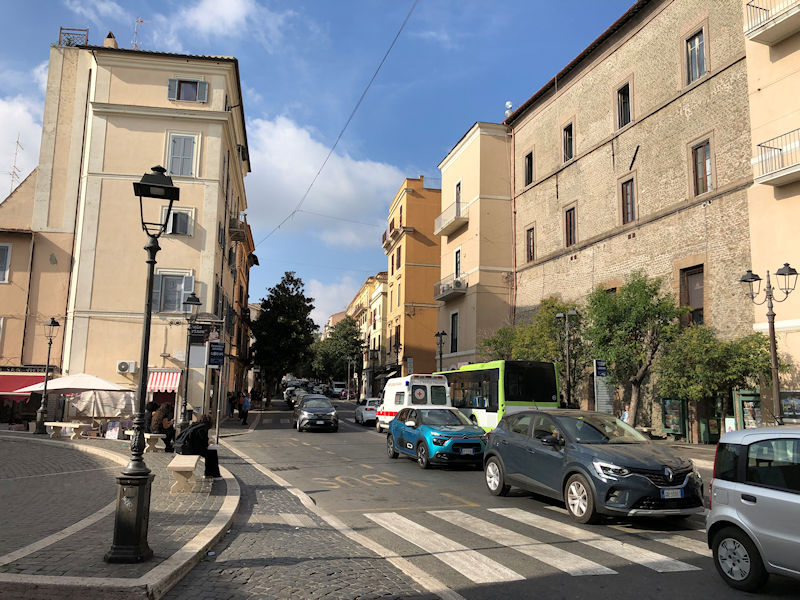
We've so far been unable to score a rental car, so we've hopped a bus down the mile and a half to Albano Laziale, a more populous but equally historic city also bordering on the southern rim of Lago Albano. We're seeking a proper supermarket, rather desperately. This main road through the upper town is in fact the Via Appia Nuova (the original, the Via Appia Antica, was farther down the hillside, before the Albano-Ariccia bridge was built over a ravine, which we'll soon see, in the 19th century.)
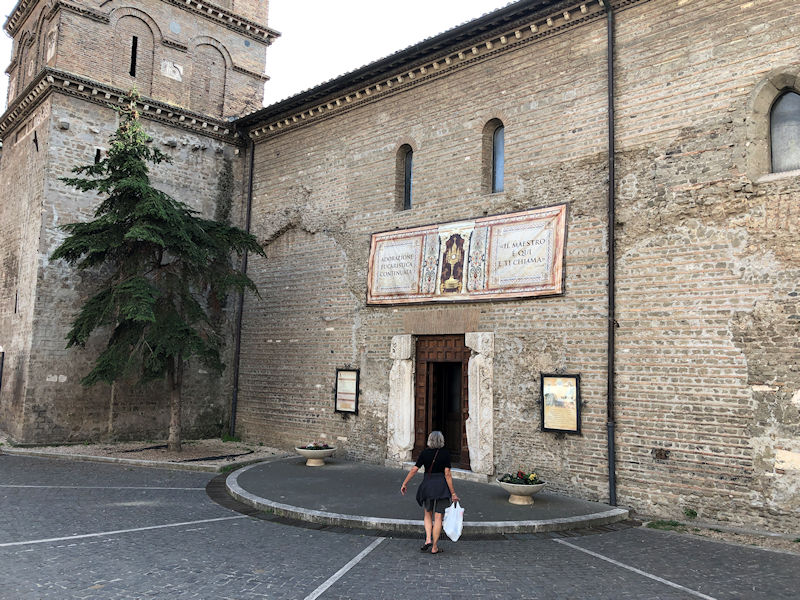
Here along the main road, with its own little piazza, is the Church of San Pietro, first built in the early 6th century from one of the rooms of the Emperor Caracalla's baths, restored in the 12th and 14th centuries, and still hanging on quite well.
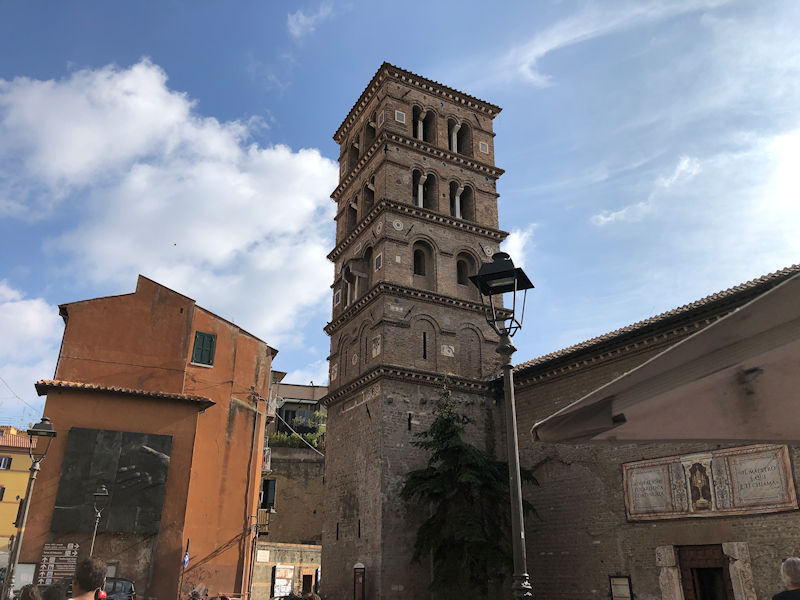
The belltower dates from the 12the century and is beautiful.

The interior is classic, a single nave with a wooden truss ceiling, and with a 3rd century sarcophagus by the left-side altar.
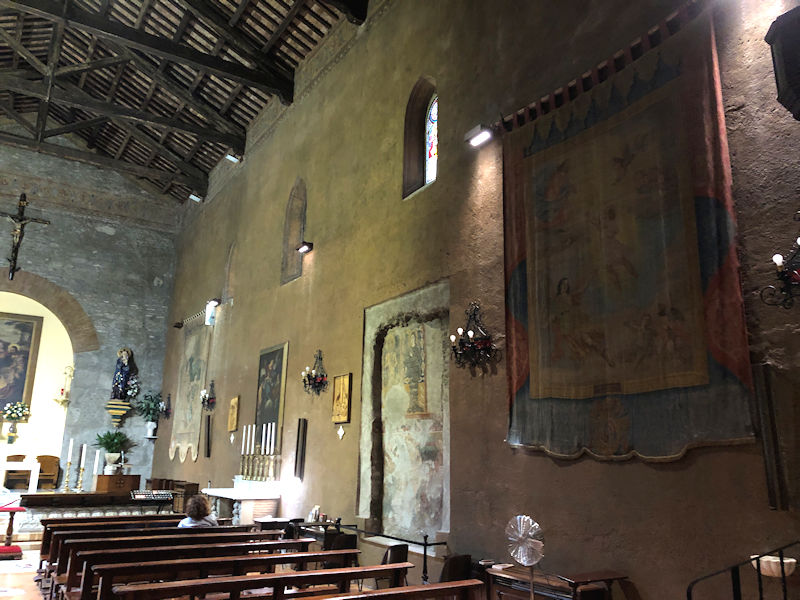
A few of the frescos are noteworthy, including a Byzantine era one of the Virgin and a 13th/14th century picture of St Margaret and the desert hermit St Onuphrius. The altarpiece illustrates St Peter getting the heavenly keys and standards and is attributed to Titian.
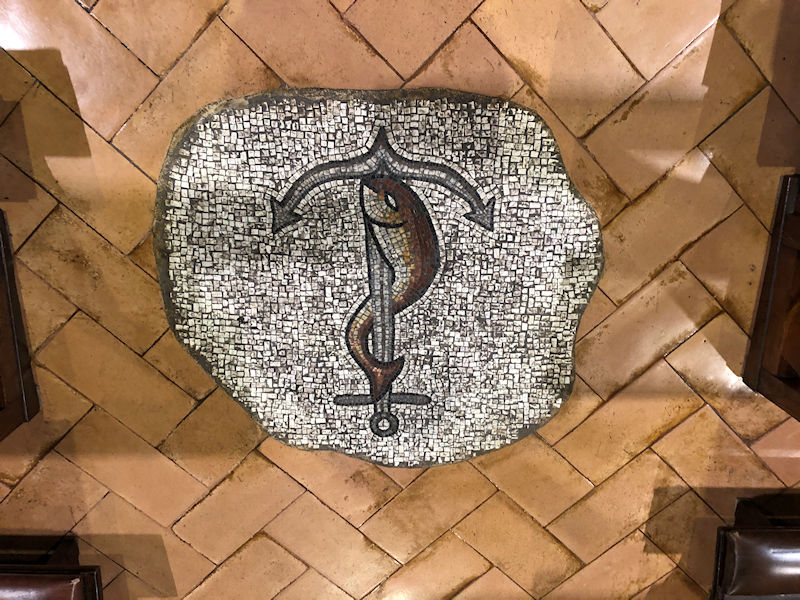
Some tiny symbolic mosaics in the flooring
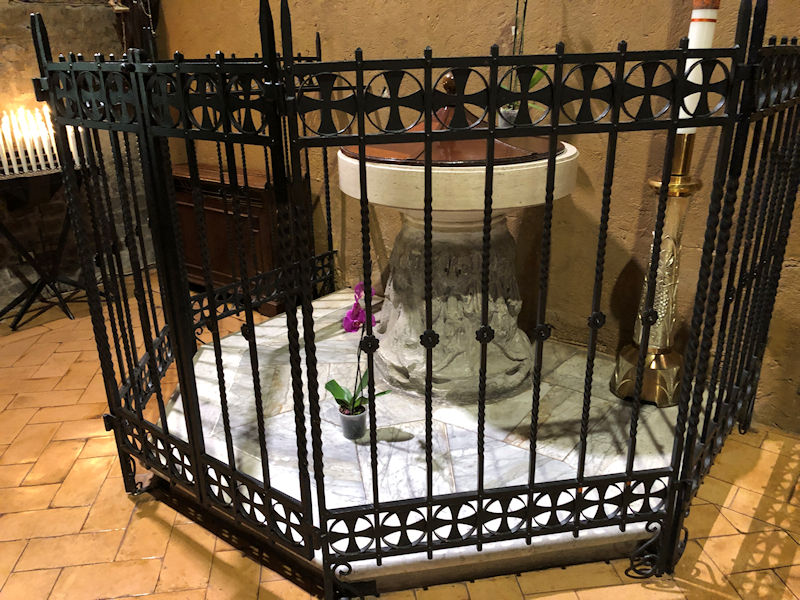
A baptismal font
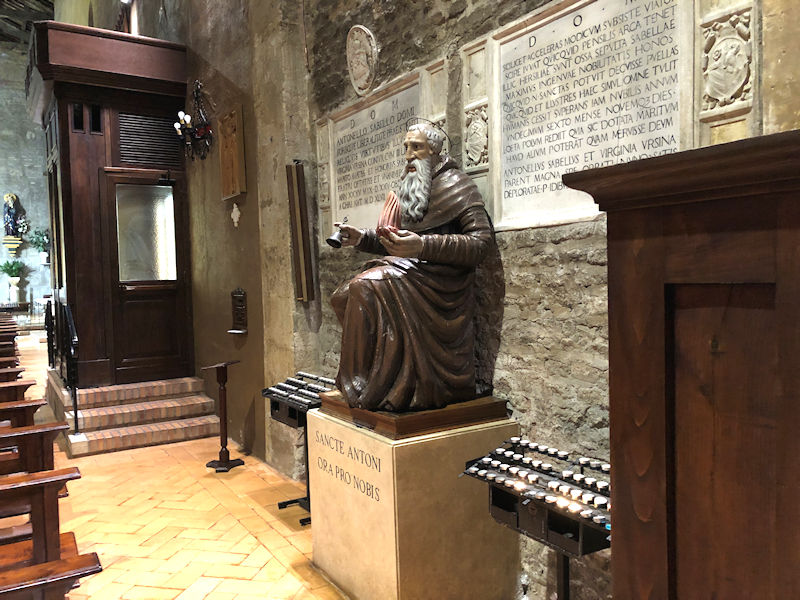
And a heartfelt prayer to St Anthony

We continue our search for a Pam hole-in-the-wall supermarket.

Having found which, we pass by the Turtle Fountain, empty at the moment.
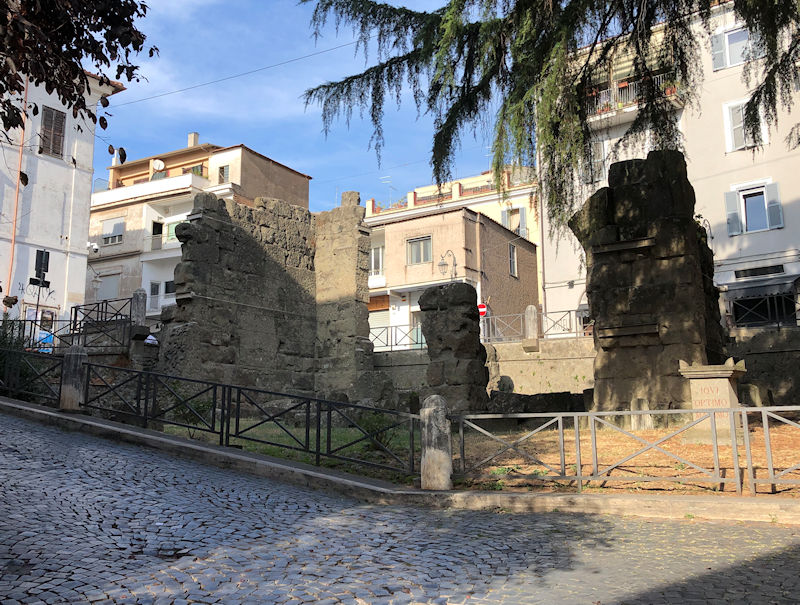
There are many noteworthy sights to be seen in Albano Laziale, like an amphitheatre, remains of Roman baths and city gates, the 18th century cathedral and other churches, and a large number of aristocratic palaces, but we were in a hurry and missed them all. But we did happen to wander across this thing.
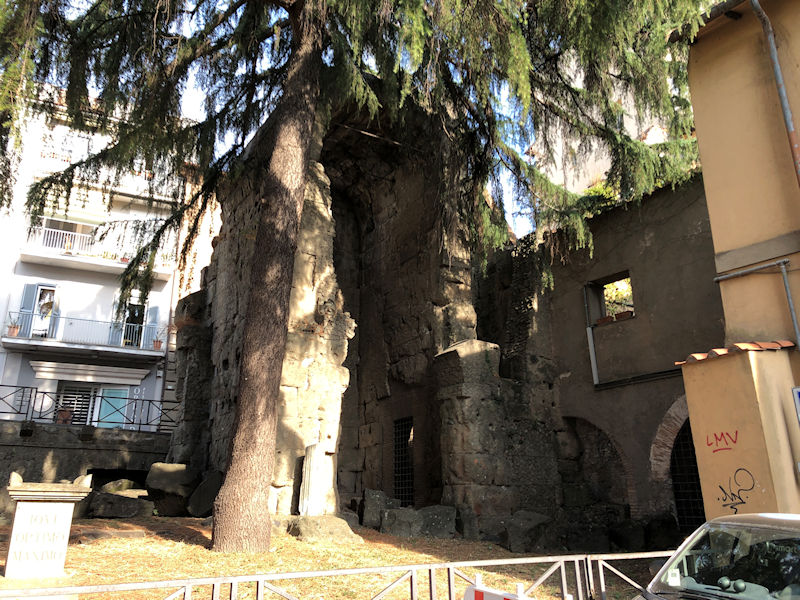
In AD 197 the emperor Septimius Severus (r. 193-211) was headed off to do battle with the Parthian Empire, and he levied three legions for the purpose. Having succeeded in defeating the Parthians and sacking the capital Ctesiphon, he established the Legio II Parthica in a new fortress here in about 202, the first legion to be based in Italy for centuries. It was only disbanded many years later, by Constantine in 312.
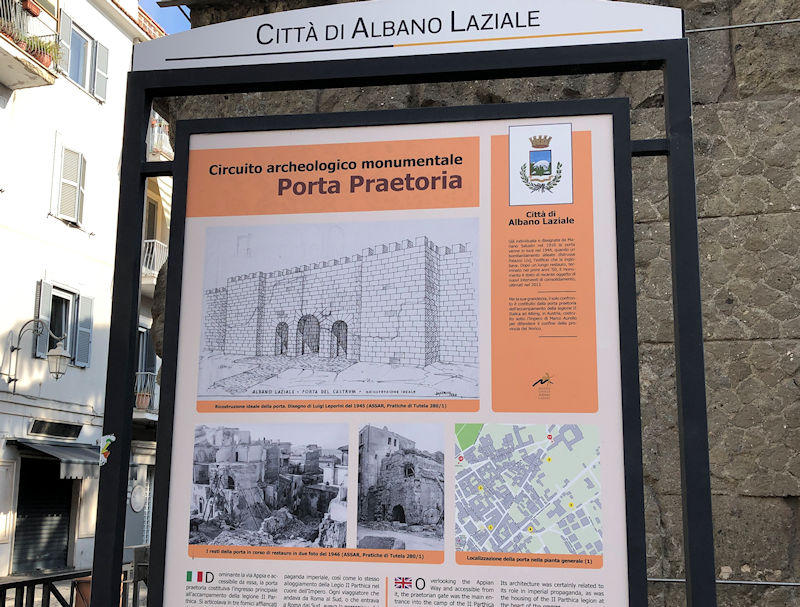
This is what it apparently looked like. In its heyday.

Not too much of is left now. Over the eons, Albano has been sacked and looted during the Gothic War of the 530s, by Saracens in 1142, by the Romans in 1168, by the papacy in 1436, by the French in 1798, and most convincingly by Allied bombing raids in February 1944.
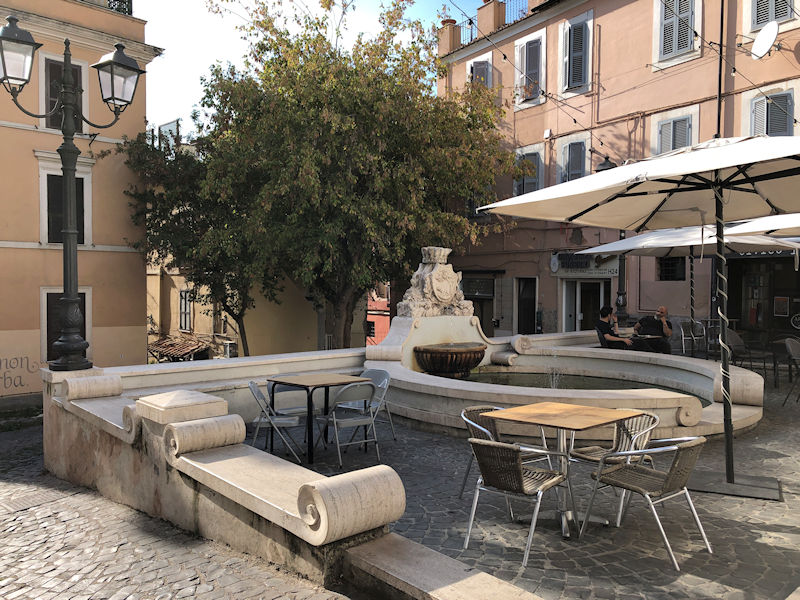
A casual perambulation as we head back towards the bus stop
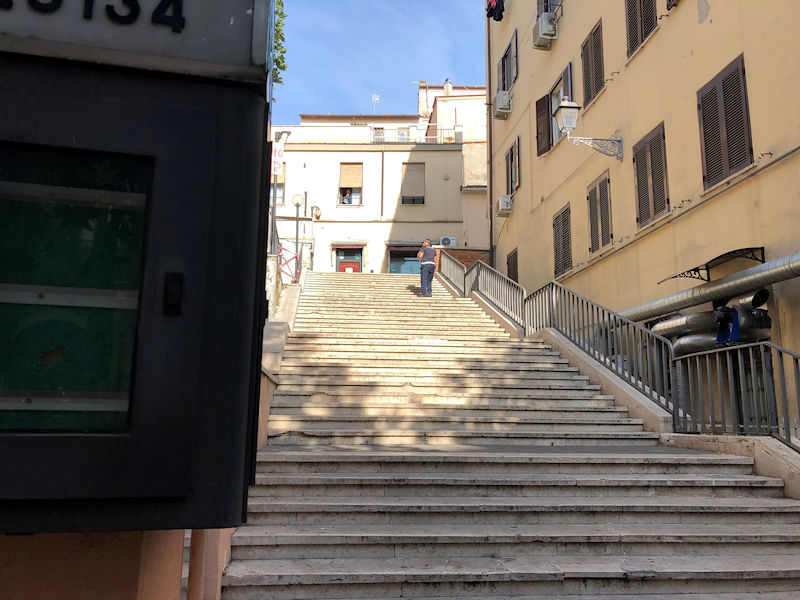
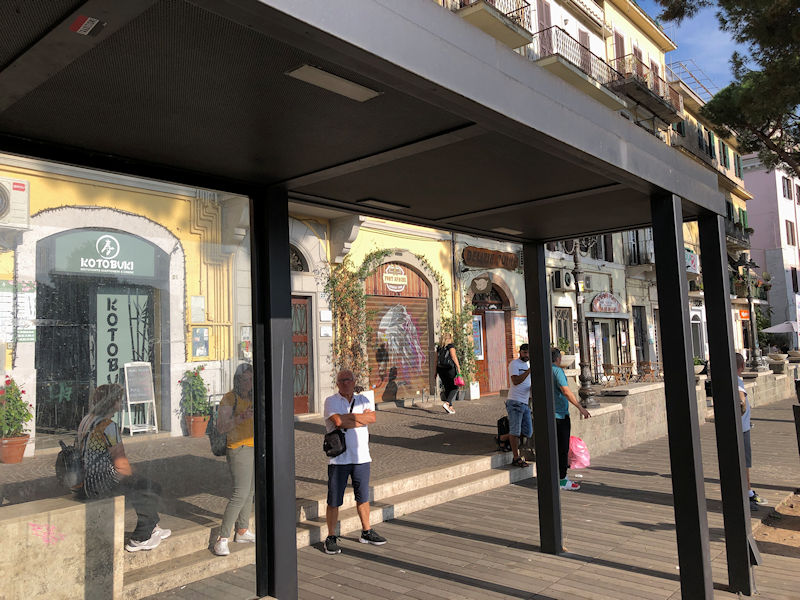
Back to the bus stop at the end of town. There's evidently no fixed schedule but they do come along reasonably frequently.
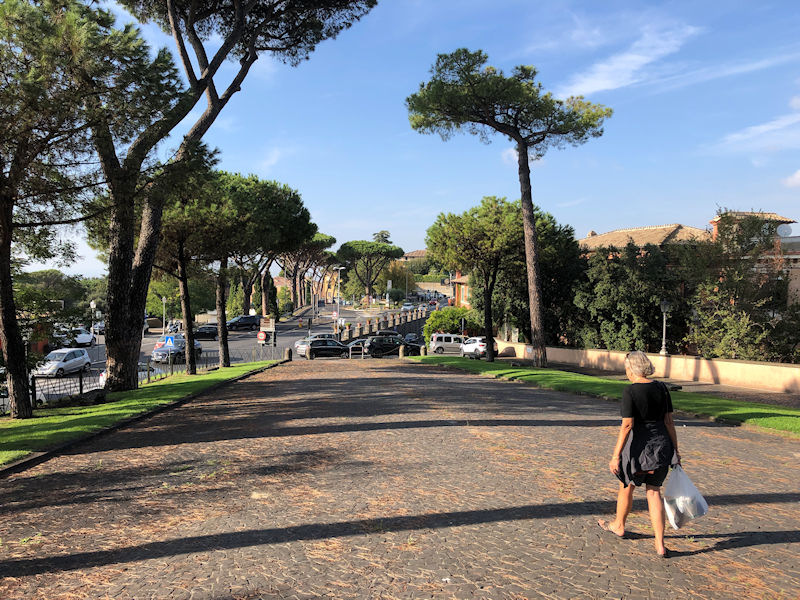
Back in Castel and down from the Papal Palace grounds with the groceries

The next day, 19 October, we're still looking for the car rental, but we've massively overshot Albano Laziale on the bus and fetched up in the next town along, Ariccia, nestled on rough ground between Albano and Genzano di Roma on the southern edge of Lago di Nemi.
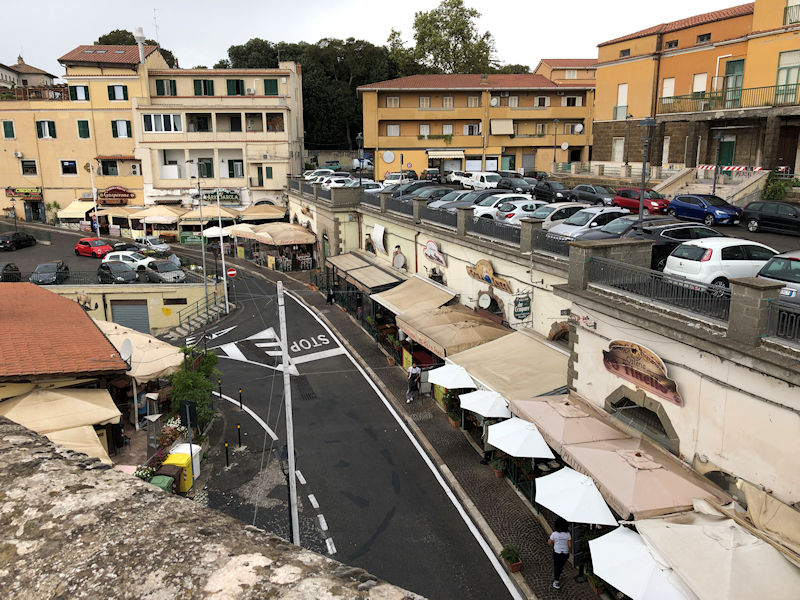
It needs to be said that we have not yet been able to find a road map for purchase anywhere; in fact, we never did. We're presently marching the two kilometers back towards Albano.
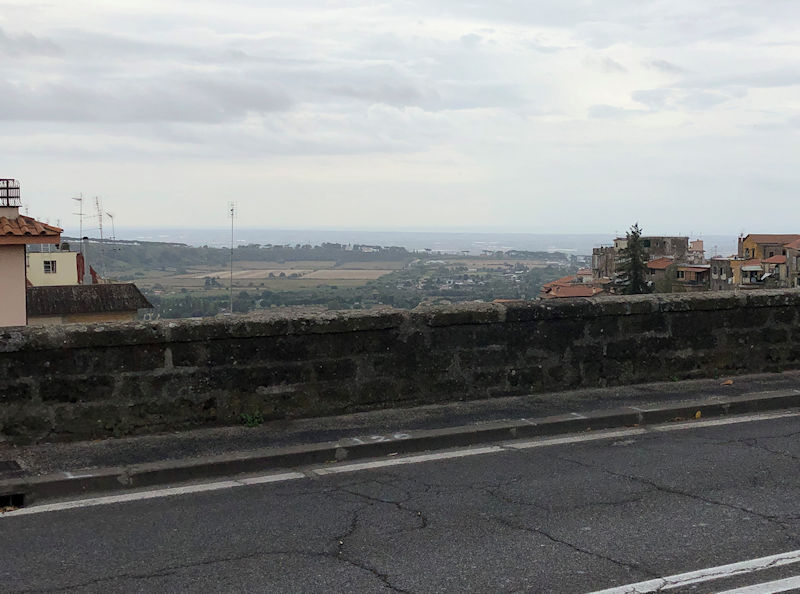
This certainly looked like the famous 19th century bridge that crossed a serious ravine between the two towns. After all, that's the Mediterranean Sea just over there.
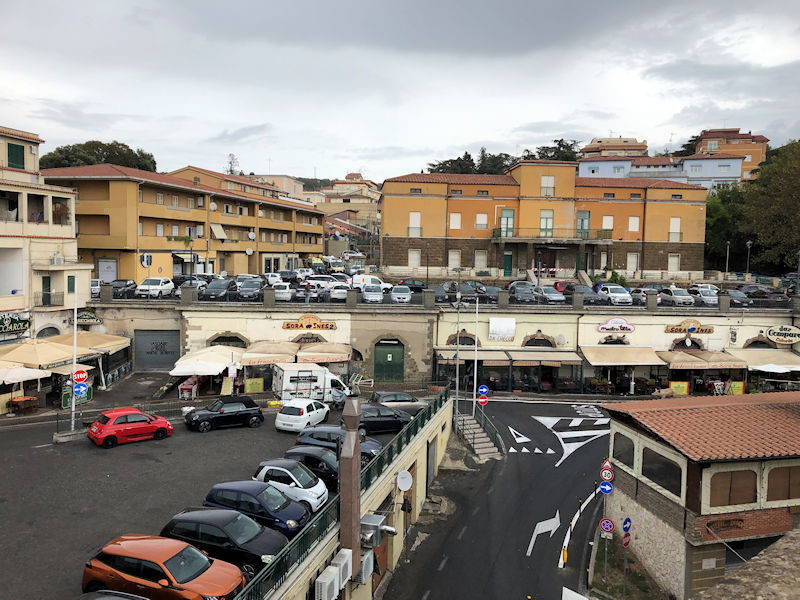
So we're confident that we'll soon be back in Albano and can get working on that car rental place.
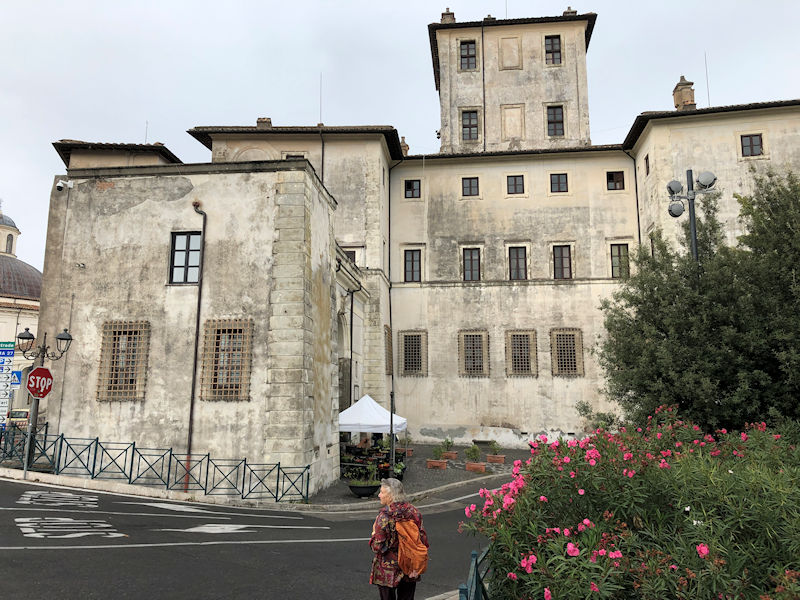
Over the bridge we're confronted by this monster house, but the lady in the flower stall under the white umbrella had no help to offer.

That's rather a fine setting for a ancient fountain at the street level. We're led to believe that we are now in Albano Laziale.
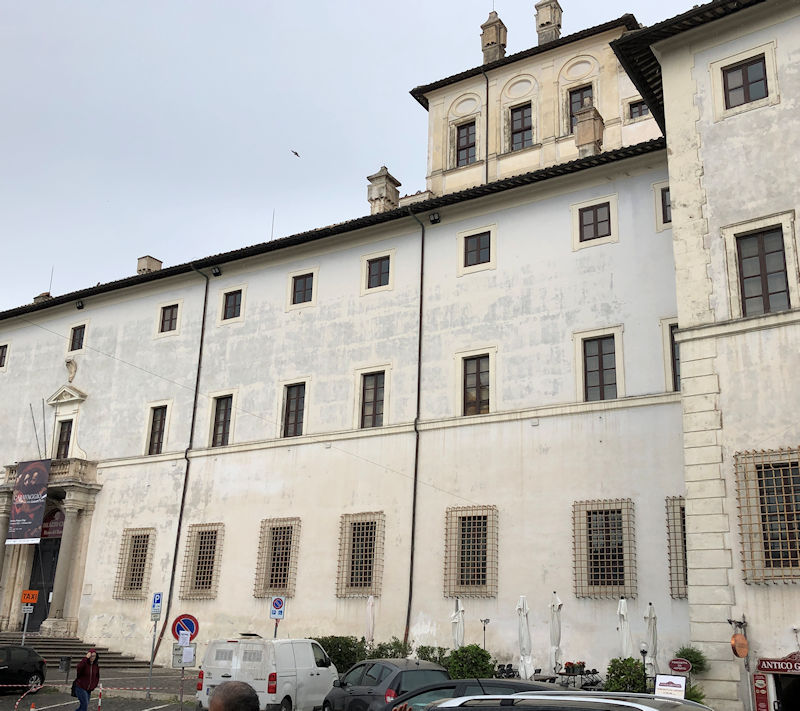
That monster building turns out to be a bit more than that.
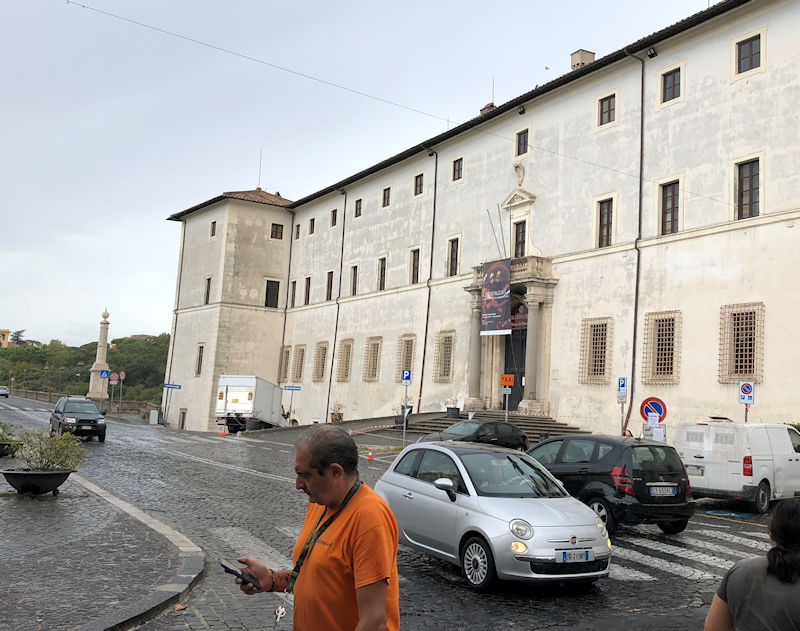
As it turns out, though we sincerely did not know it at the time, that thing is one of the wonders of Ariccia -- the city passed into the hands of the powerful Chigi family in 1661, and Pope Alexander VII Chigi lived here for long periods; this is now the central square of Ariccia, and the pope rebuilt the 15th century Savelli palace into this Palazzo di Chigi, with help from Gian Lorenzo Bernini.
The palace has a fairly grim look to it, but all descriptions of the place point out that 'The sober exterior does not reflect the highly decorated interiors'. It's said to have the only fresco that Bernini ever signed. The princely owner ceded it to the comune in 1988 and it's now used for exhibitions and events, and open to the public (who knew?? Too late now).
And the real 1854 engineering-marvel bridge connecting Albano and Ariccia over the ravine is over there on the left. So, obviously, we're still in Ariccia.
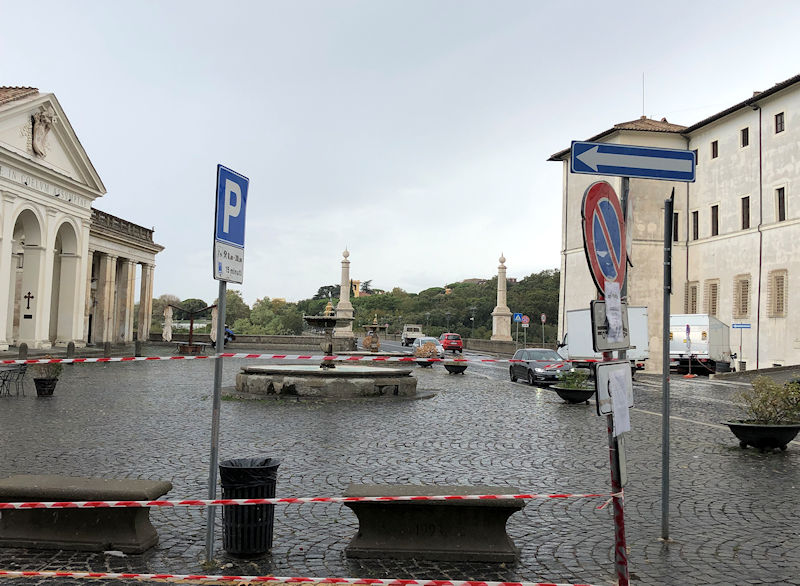
The Piazza di Corte, fronting on Bernini's other main contribution . . .
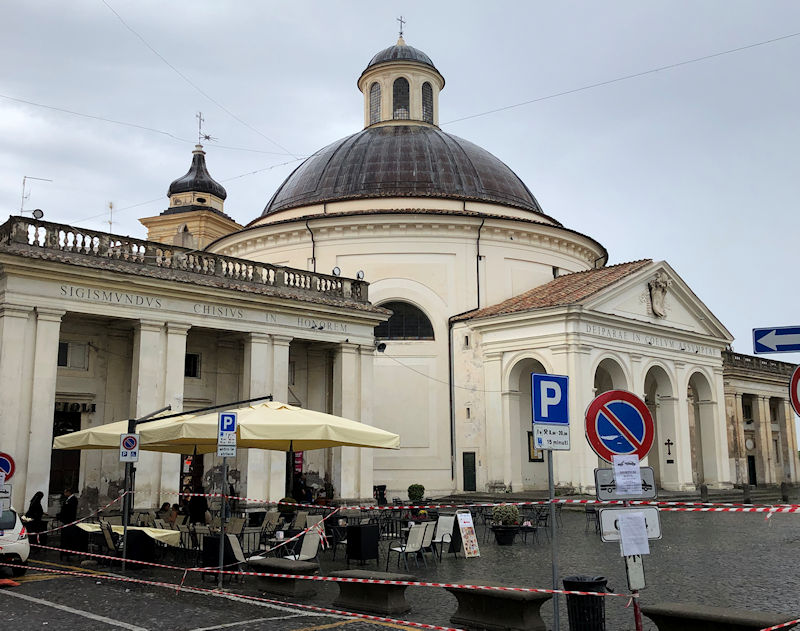
. . . the Collegiate Church of Santa Maria Assunta, designed by Bernini and built 1661 to 1664. We didn't take time to look inside, because . . .
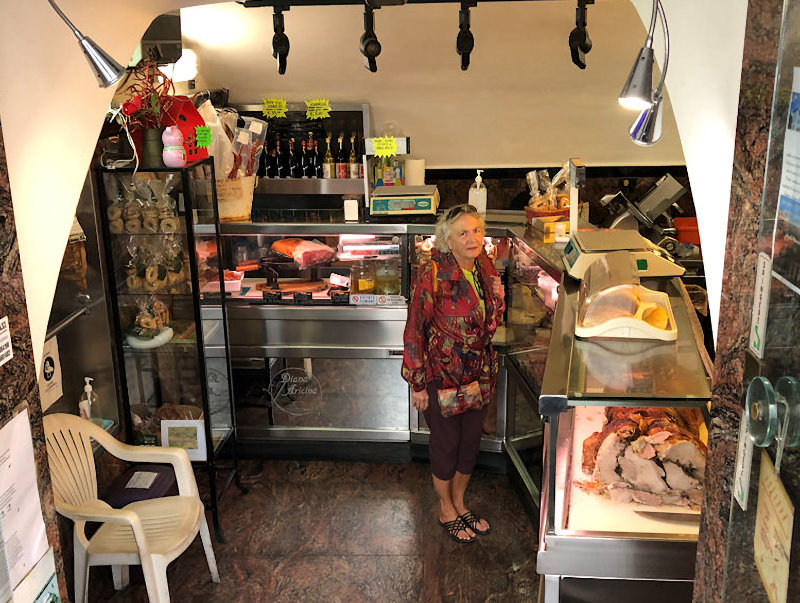
. . . Kristin was in the porchetta shop trying to find out how to get to the car rental place. The owner just repeated that you can't get there from here.
Porchetta, slow-cooked pork roast with aromatic seasonings and crispy skin on, great for sandwiches, is what Ariccia is mainly known for.
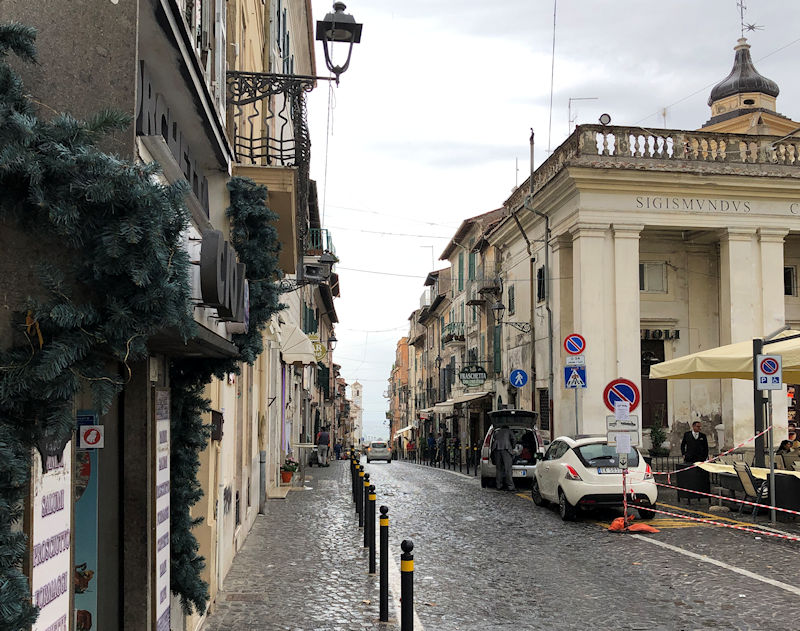
The only geographical notion we had about the car rental place was that it's down the hill from the main part of Albano, so here we go . . . down the hill. (Too bad that this isn't Albano.)
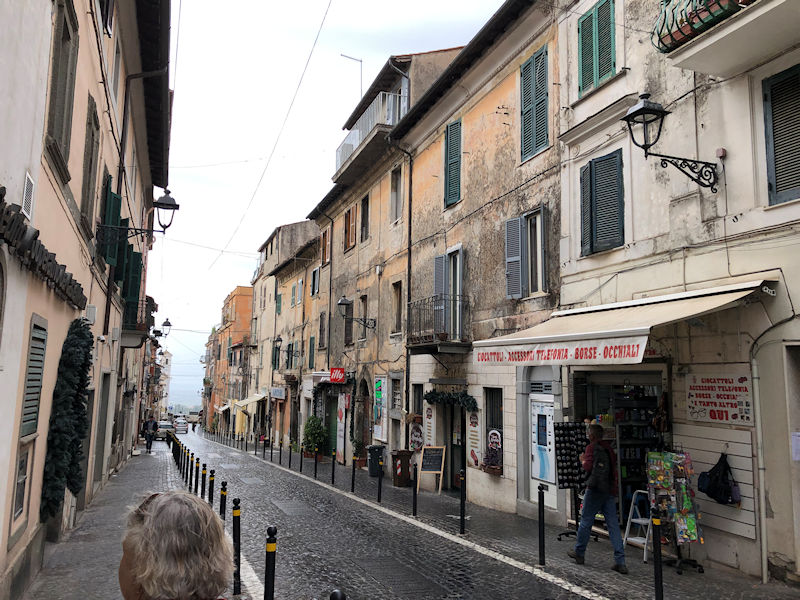
In retrospect, it certainly seems pathetic, but as mentioned, we didn't know we were actually in the wrong town.
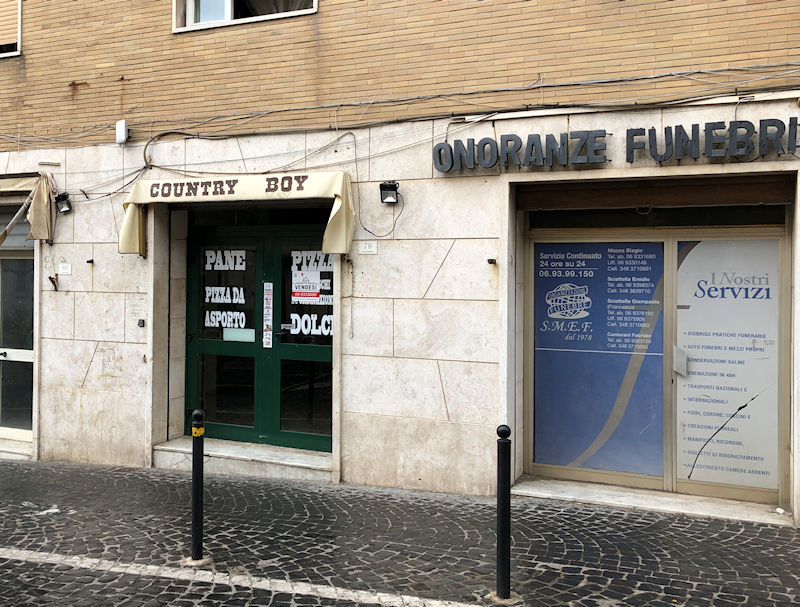
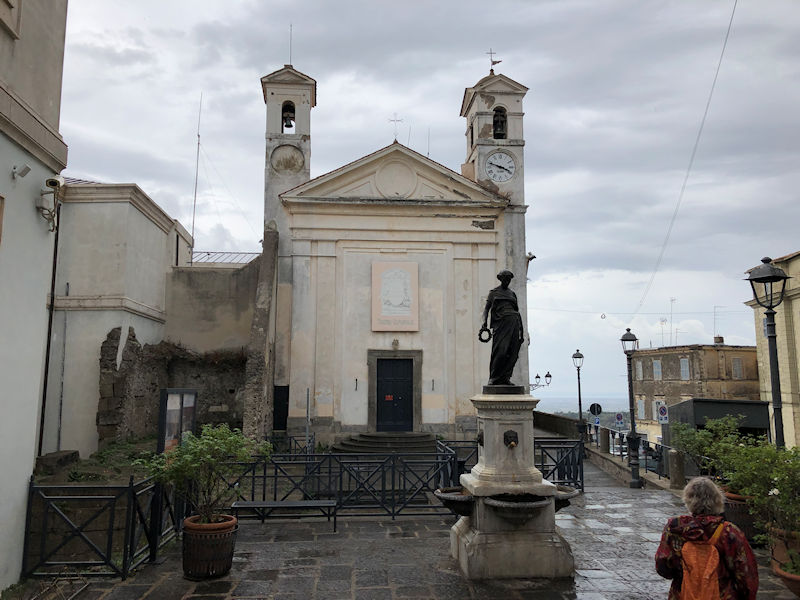
That's the Teatro Bernini, formerly the San Nicola di Bari Church, which had to be hand-carried down the hill and reassembled when Bernini built the Santa Maria Assunta on the Chigis' preferred site.
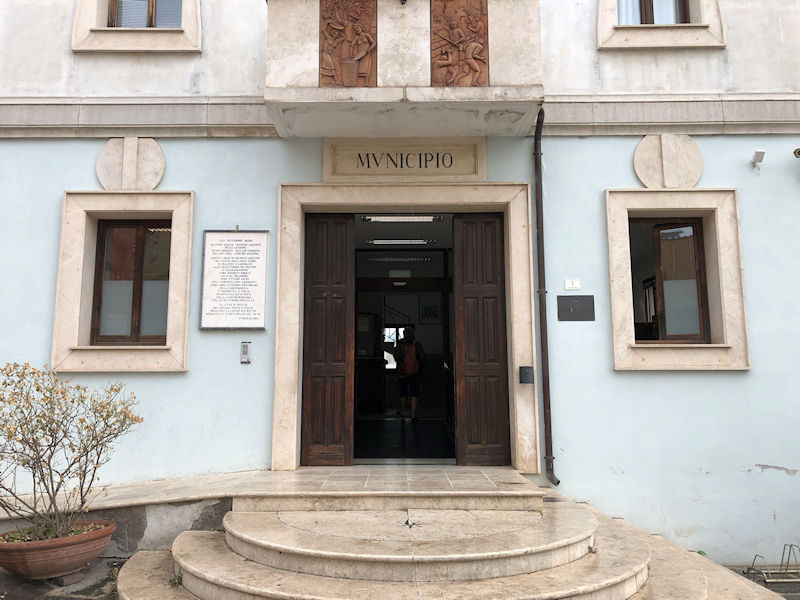
Kristin's just gone in to ask the municipal staff how to find the car rental place. They weren't helpful, so . . .

. . . we continue. Downhill.
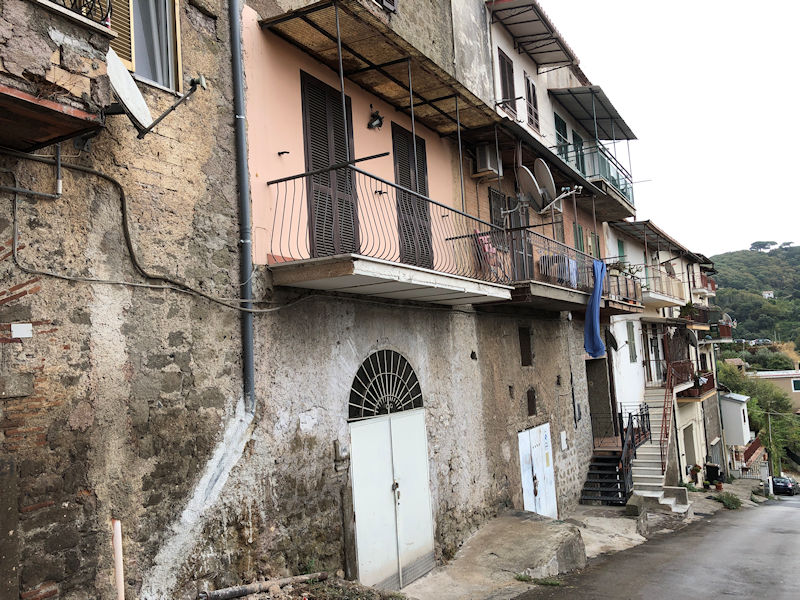
This went on for quite a long while, eventually out onto the flat agricultural lands below the towns, until . . .
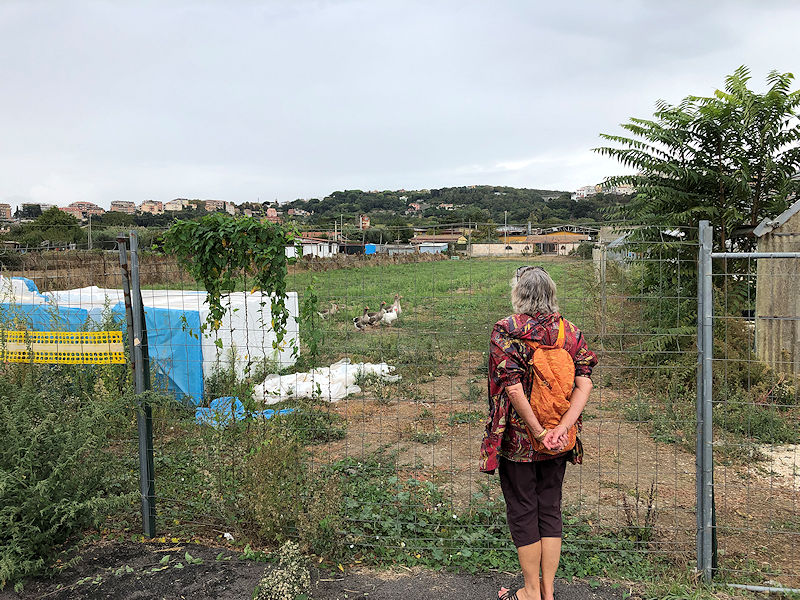
. . . we finally surrendered all hope. As whatever gods may be would have it, a workman nearby was driving up to Castel Gandolfo and all ended well. Except no car rental luck yet.
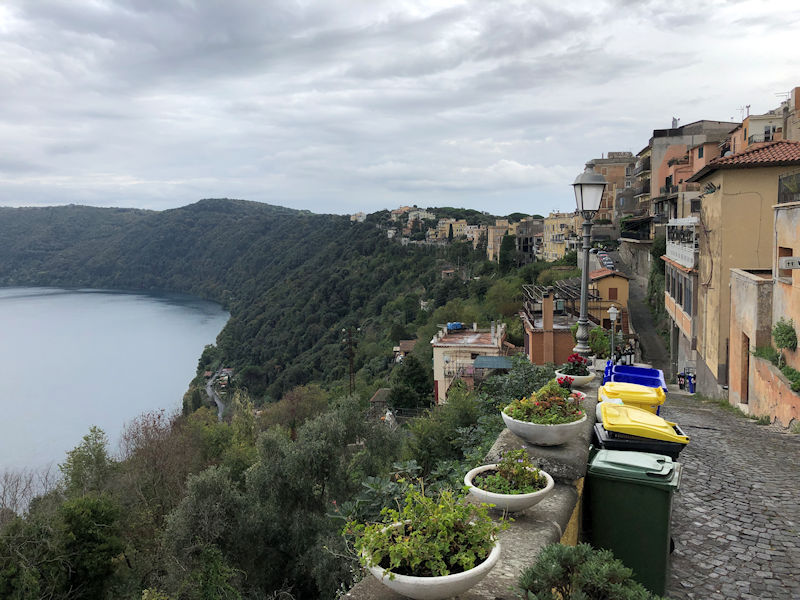
Back up in Castel Gandolfo, with its . . .
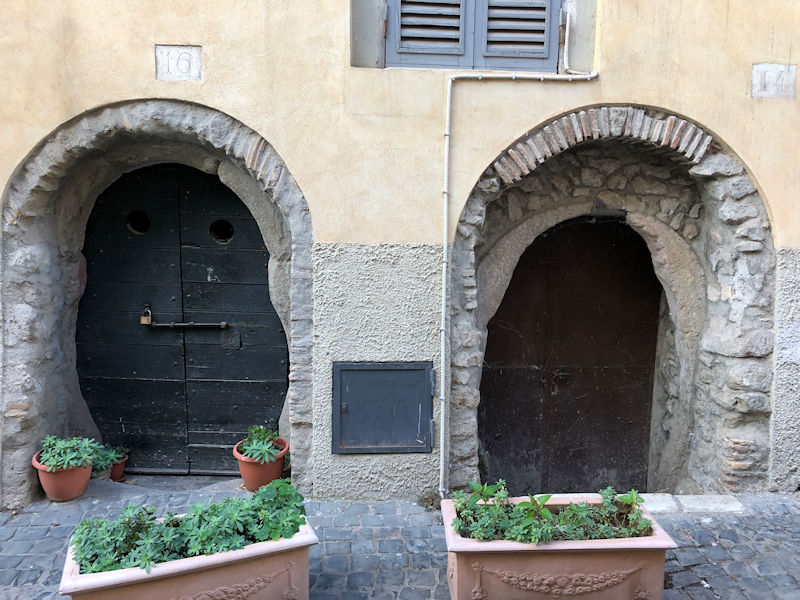
. . . picturesque ancient doorways (Mind your head)
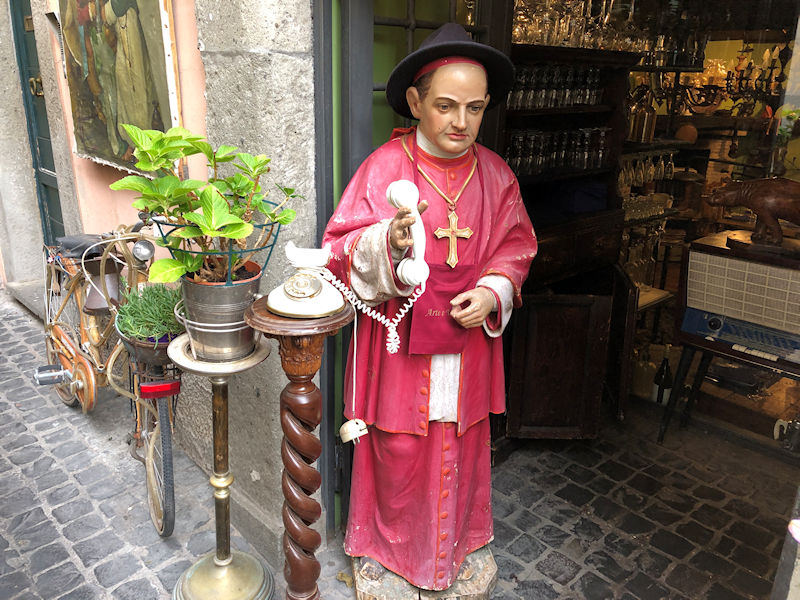
An irreverent law ornament, and an . . .
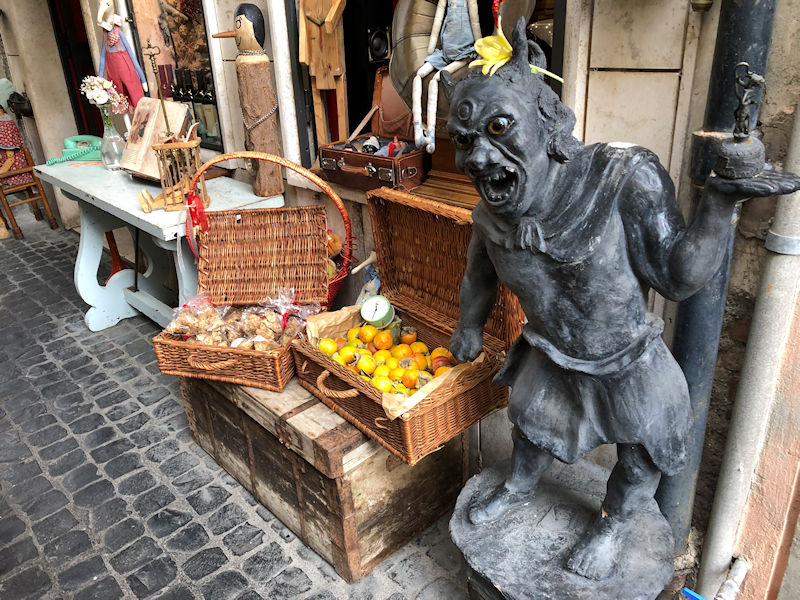
. . . even worse one
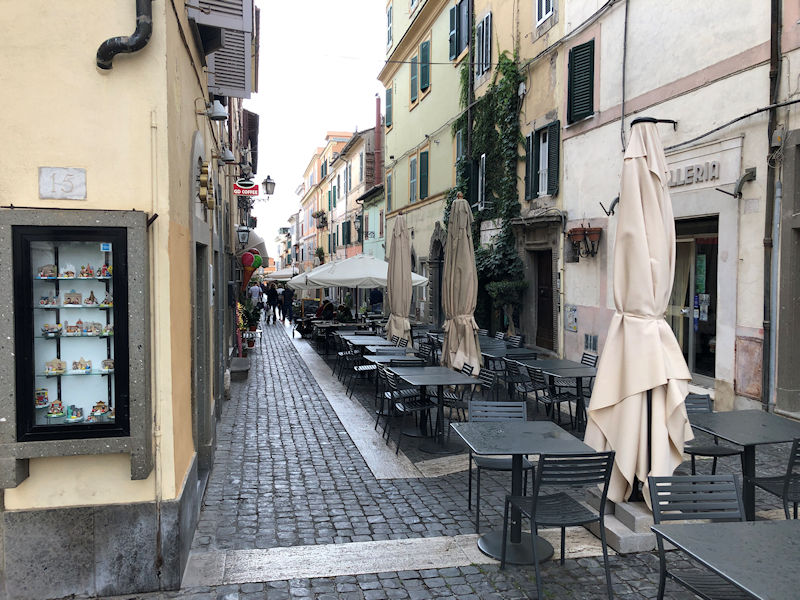
It's been raining, and the lunch crowds have drifted off.
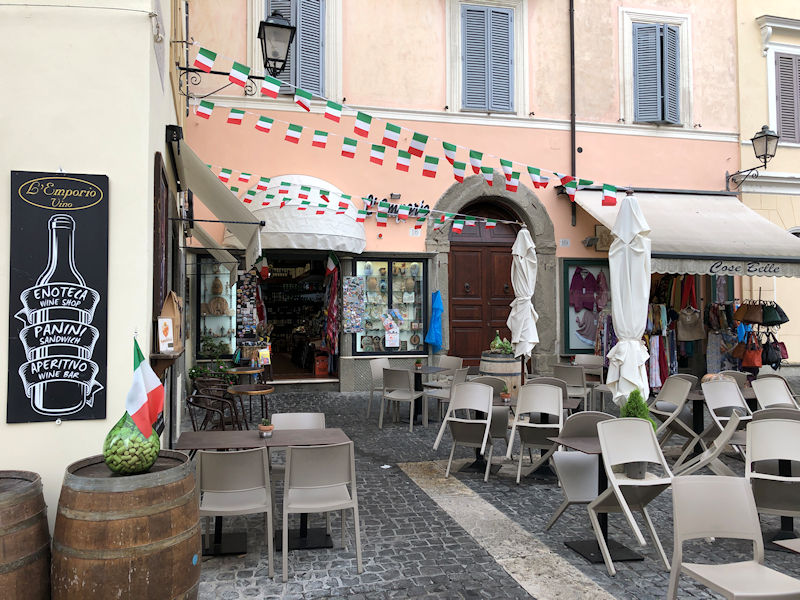
Back to the Emporio to review their wine selections (and beer, too), and snacks.
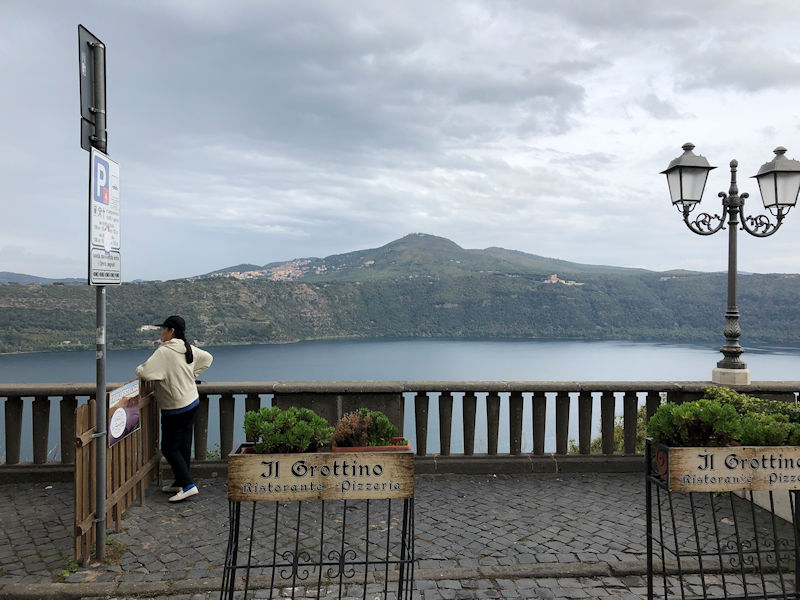
A view from Castel Gandolfo
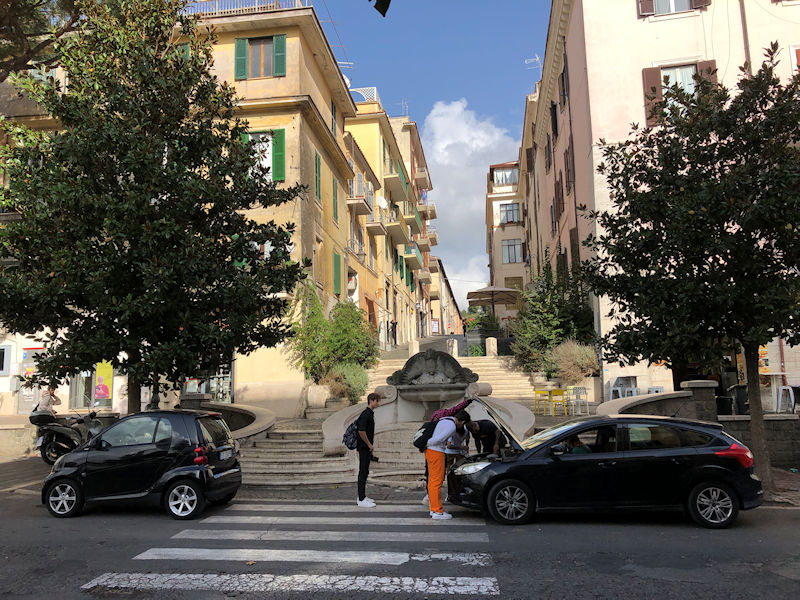
Next day (having learnt nothing), we're back in Albano Laziale, but this time we're just hunting out the Pam market ('1040 markets in Italy since 1958') for more comestibles.
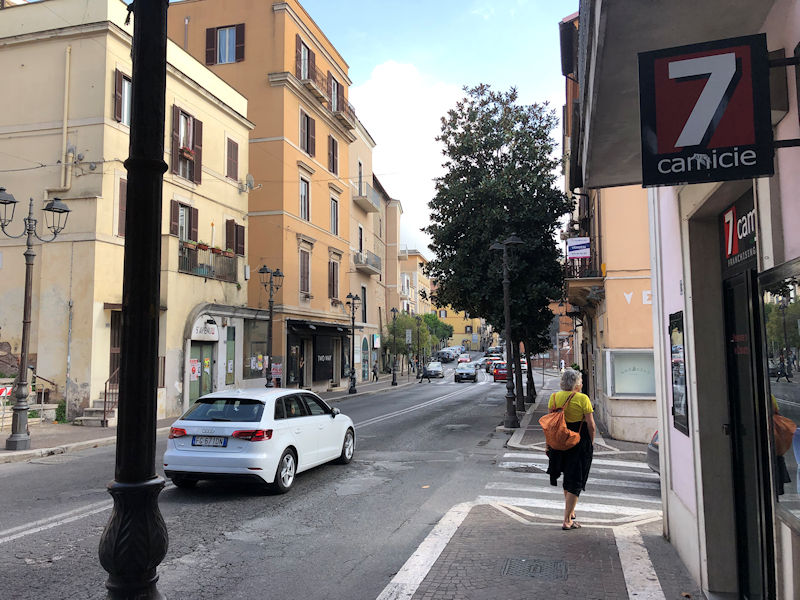
Just a quick look round for a pharmacy, and then we'll haul all this stuff home.
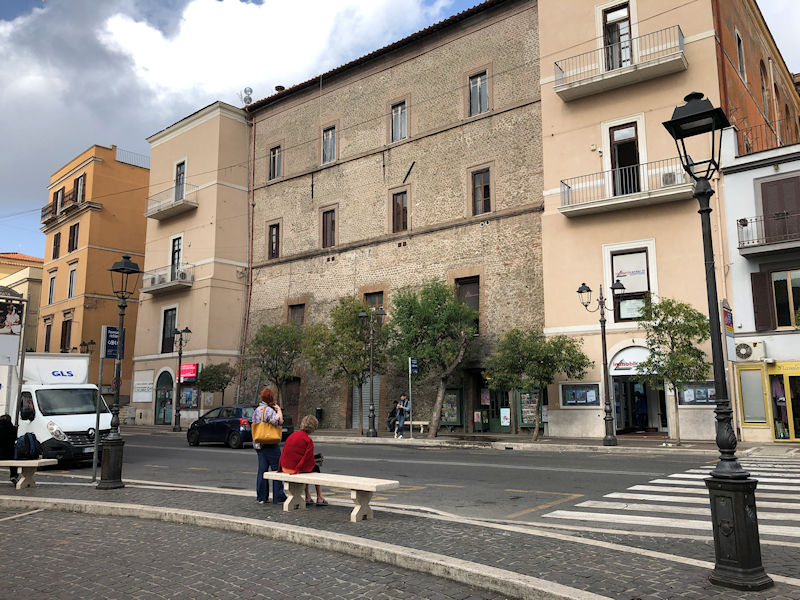
That appears to be a muncipal building, facing across at the Chiesa di San Pietro.
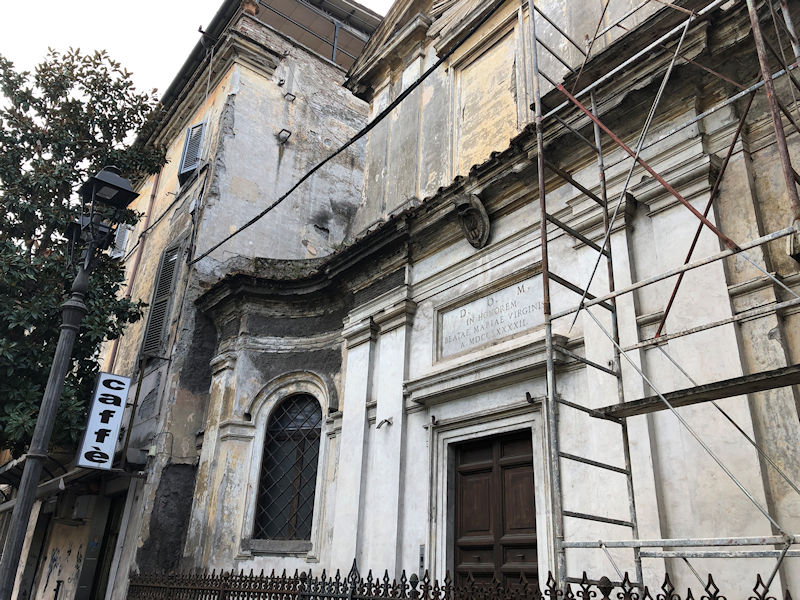
Heaven knows that that is, or was, but it's sporting a nice caffè downstairs.
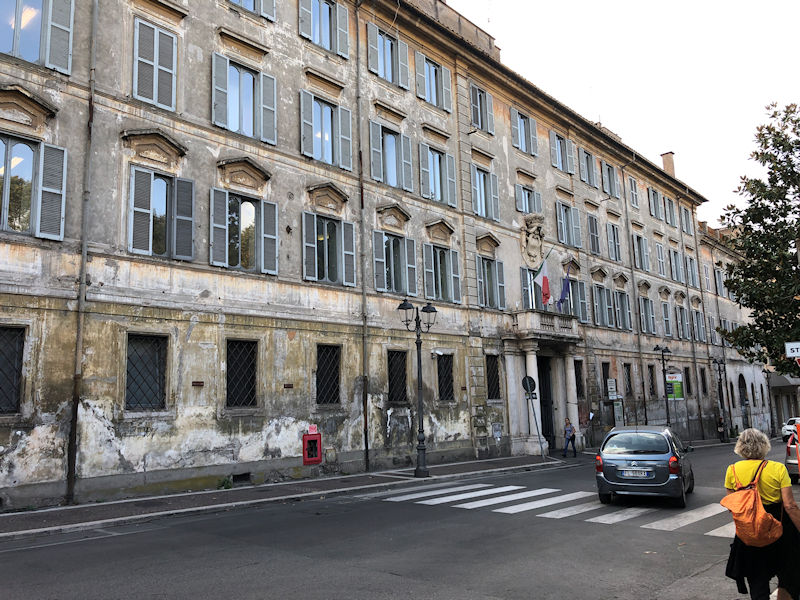
That's a genuine fixer-upper, but still, a good coat of paint might help. (Oddly enough, that seems to be the headquarters of the Public Health Department.)
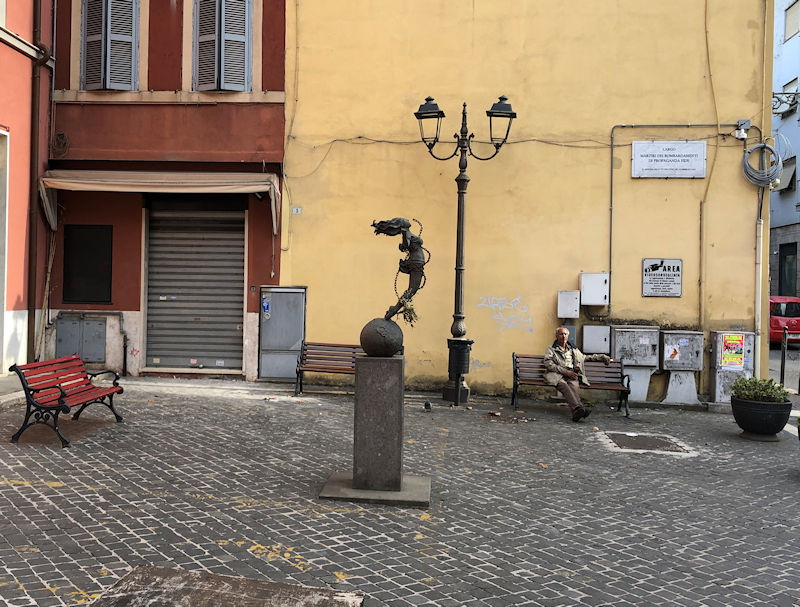
Exuberance in art
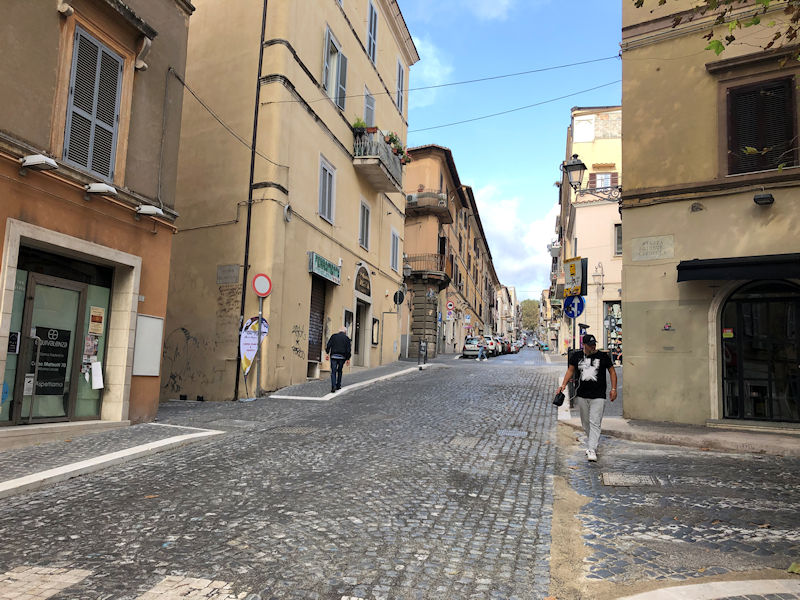
Street scene
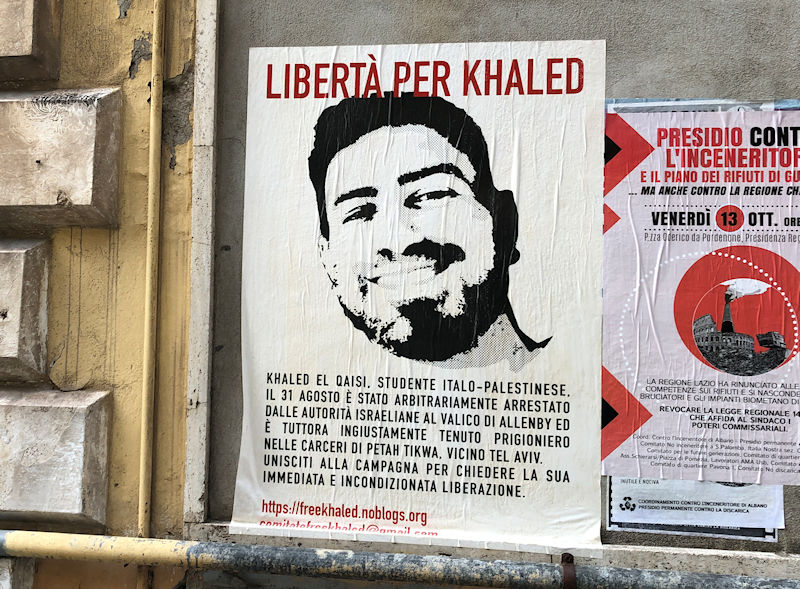
Free Khalid. An Italian/Palestinian student hauled in and incarcerated without charges by the Israelis, who haven't yet been required to explain their reasons.
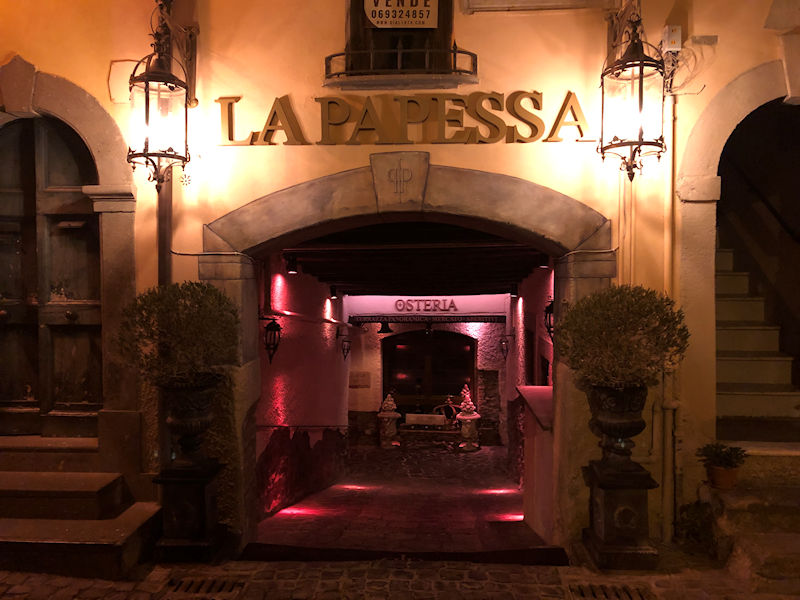
Tonght, we're breaking our Pagnanelli habit and having a go at the Papessa.
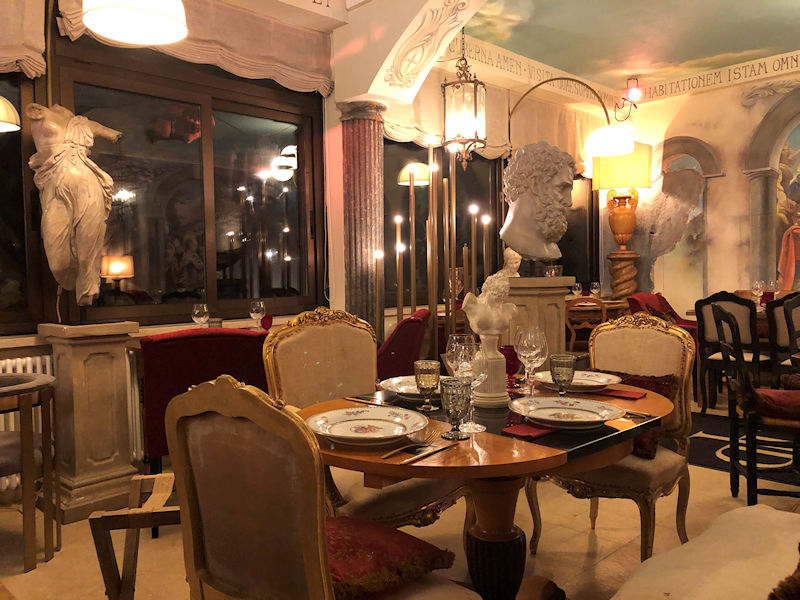
Fantastic
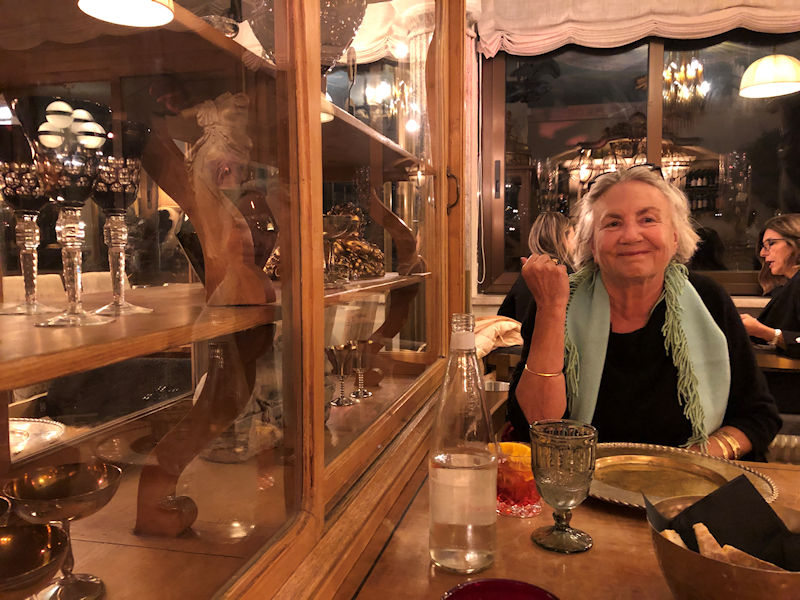
Happy to be here -- we'll definitely be back.
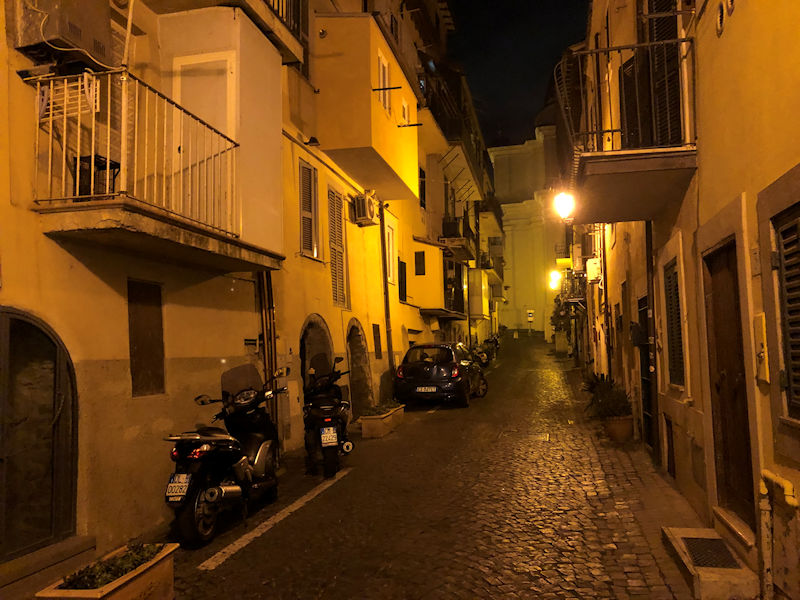
The walk home . .
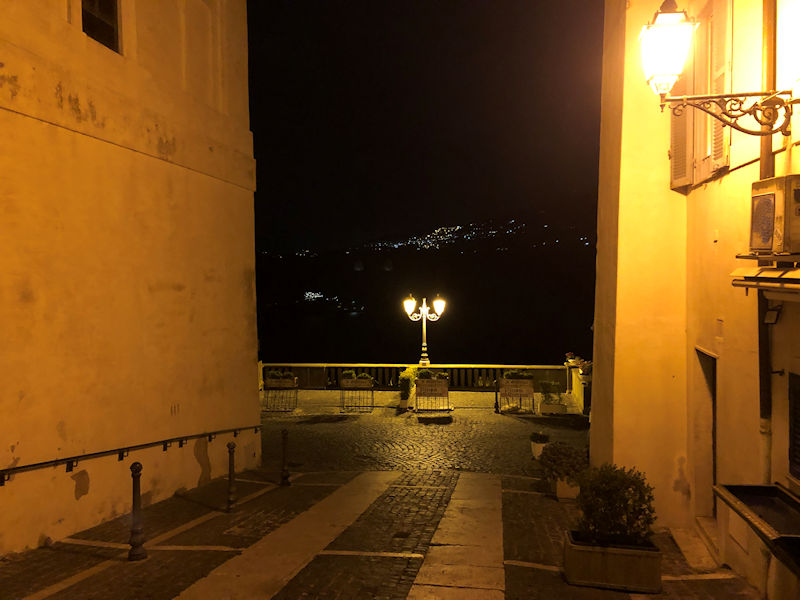
. . . via the lakeside road outside the palace
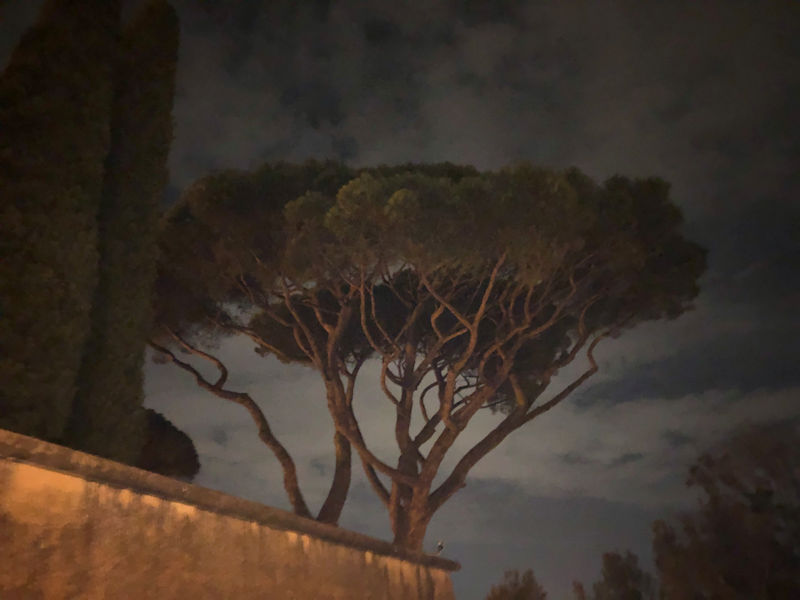
Where weird trees in the lower palace gardens stand out like paintings

And the Gardenia hotel, which we never visited, lights us down our little street, where . . .
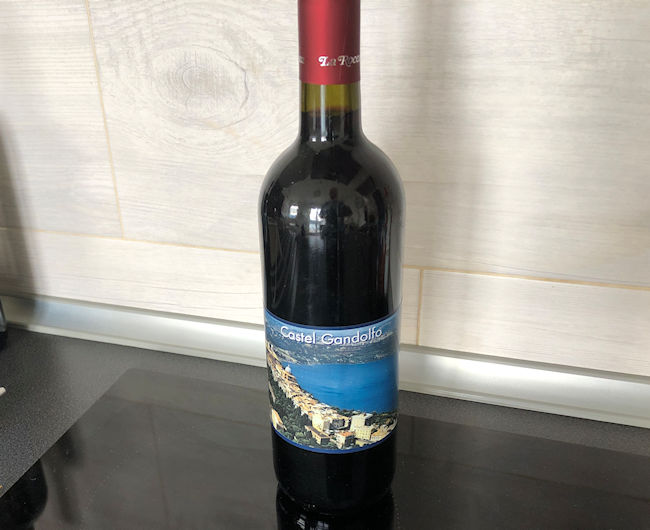
. . . we're awaited.
Next up: An awkward road trip to Palestrina


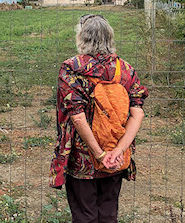 Dwight Peck's personal website
Dwight Peck's personal website













































































